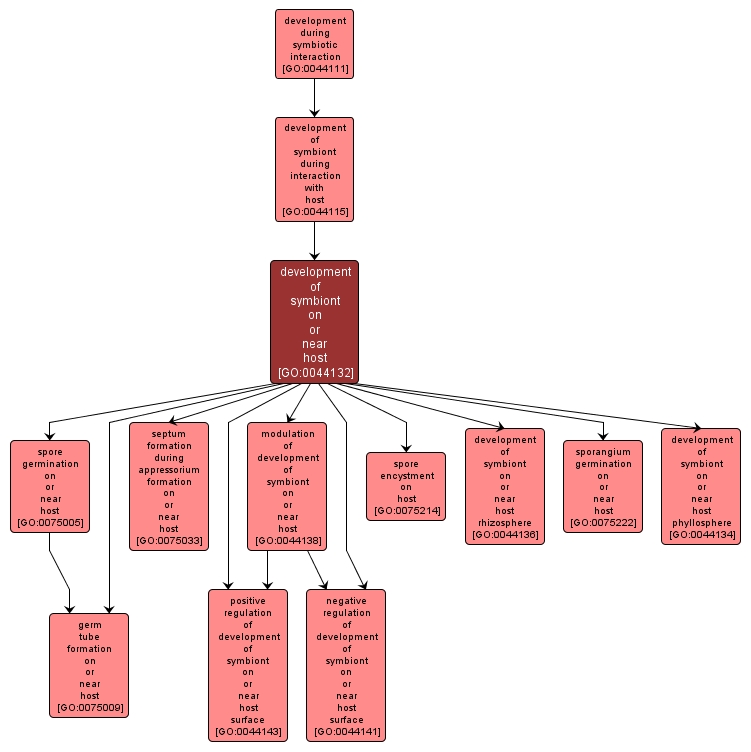GO TERM SUMMARY
|
| Name: |
development of symbiont on or near host |
| Acc: |
GO:0044132 |
| Aspect: |
Biological Process |
| Desc: |
The progression of a symbiont from an initial condition to a later condition, within the cells or tissues of its host organism. |
|

|
INTERACTIVE GO GRAPH
|














